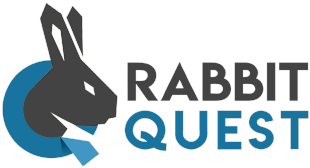What should you pay attention to while planning your vitality initiative? 🗓️
Ready! Set! Go! Are you excited and ready to launch your new vitality initiative? But are you wondering when is the best time? Your vitality initiative could be a great success, and it would be a shame if you made less of an impact because of the wrong timing. Enthusiastic employees might be on holiday or absent due to holidays when they want to participate in your vitality initiative. This is a missed opportunity for your employees, but also gives a distorted picture of the results of your initiative. We share our insights from conversations with 500+ HR managers on the timing of your vitality initiative and what to look out for while planning your next vitality initiative.
Time to read: 5 minutes
Holidays, streamers and vacations 🏖️
Imagine this: you have developed a new vitality initiative all around May. "May Active!", with activities such as morning yoga in the park, healthy smoothie workshops, and even a mini-marathon around the office. Everything has been planned to perfection. The posters are already hanging in the lift, the newsletter has been sent out, and you have already received several enthusiastic responses. Suddenly, the May holidays are just around the corner, a period when many employees have decided to soak up the sun with their offspring. The office suddenly has more empty desks than occupied ones. On the day of the kick-off of your vitality initiative, you happily stand in the park with a clipboard in hand, waiting for the horde of enthusiastic employees who were excited. Instead, you stand with the yoga instructor in front of a small group of employees who happen not to have taken time off. "Of course... the May holiday..."
Integrate national holidays and public holidays into your calendar.
To avoid this, before planning your vitality initiative, it is best to look at the school calendar and national and cultural holidays. An easy way to do this is to integrate the school calendar and list of public holidays into your own work calendar beforehand. Many digital calendars, such as Google Calendar or Microsoft Outlook, offer the option to display national holidays automatically. Bert can turn this feature on to see when major public and potential school holidays occur immediately.
Here is an overview of the public holidays used by the Netherlands.
View Dutch public holidays, school holidays and building holidays for 2024 here
Ask your employees
You can get the clearest answers by simply asking employees. For example, distribute a short, informal survey asking when they would like to participate in your initiative. Are there specific days in the week that are suitable and are there weeks that offer a lot of space for your initiative? This is especially useful in a diverse team where different cultures and religions are celebrated. For example, some team members may want to take time off for days that are not on the standard calendar, such as Diwali or Chinese New Year. This not only allows you to time vitality initiatives well but also shows employees that you respect and care about their personal lives and cultural backgrounds. And who knows? It may lead to new ideas for themed vitality activities that tie in with cultural celebrations. You might want to transform 'Winter Wellness Week' into something even more spectacular.
Deadlines, year ends, and the corporate calendar 🗓️
We all have moments in the year when important deadline days come back. You might almost be able to predict it already. A finance company always enters a busy period in January and February. Around this time, all year-end closures have to be completed every year. The corporate calendar can be a handy guide for scheduling your new initiative. What are important recurring deadline days? Which events are already scheduled? On which days do most employees go on holiday? Think about major project deadlines, corporate events, or even local holidays. Imagine planning a mindfulness day on the same day that the sales department has its annual customer day. Then the timing of your initiative clashes with the schedules of several employees.
Digital agenda sharing
An easy way to gain more insight into the company agenda is to share digital agendas. For example, ask your colleagues if you can be CC'd via email when a new event is coming up, or ask them if you can access these digital calendars. You can then set up automatic reminders, for example, to be sent to you before the event or deadline.
Time management creates more support
By aligning vitality initiatives with the company calendar, you avoid your initiative being seen as an extra pressure or extra burden. You want all employees to be able to participate full of energy and not see this as a stressful addition to their calendars. This means that it's better to schedule a walking initiative in a quiet month, for example, or after a big project deadline when everyone could use a pick-me-up. Thus, vitality initiatives not only become a success but also reinforce a sense of good time management and consideration for employees' needs within the company.
Juggling multiple agendas 🤹
After work, you might want to exercise or run errands, and at the weekend, you probably have fun activities planned. Your work agenda is not the only agenda; you probably have a private agenda yourself. Sometimes employees have to take into account as many as 3 other agendas. A personal agenda, or children's agenda, or a partner's agenda. It's a bit like a parent trying to schedule a hairdressing appointment without missing the youngest's football game and the oldest's school play, having to do the shopping and prepare dinner. A bit chaotic, but certainly possible with some forethought. Zoom in on these other agendas employees are balancing between. Understanding when your colleagues take holidays or are tied up with other activities outside working hours can help you plan your vitality initiative.
Involve personal diaries with company diaries
You can gain insight into personal celebrations or holidays by encouraging employees to share important dates such as holidays or special occasions through an internal system. Employees can put themselves absent. Perhaps a colleague on the marketing team has a big family reunion on the first Saturday of July every year. This colleague can mark this date with the digital tool as a no-go. Should several colleagues indicate that a particular day does not work for them, you can factor this into the planning of your vitality initiative. You could emphasise with a reminder e-mail that this information can greatly help the planning and efficient organisation of your vitality initiative. Implementing such a system ensures transparency and commitment. Employees feel heard and valued because their personal commitments are recognised.
Invite employees to share their preferences
Another way to do this is, for example, by organising a 'vitality lunch'. Invite everyone to an informal lunch where you give a small presentation on possible vitality activities and then ask everyone to express their preferences on a schedule. You could also, for example, put a big calendar on the wall and let everyone put stickers in the months they find most suitable. Or, for example, send around a short survey asking about favourite times for vitality activities. Make it fun by asking, for example, "When do you feel most like a superhero-after Christmas pudding or as soon as the summer sun hits your office?" This keeps the tone light-hearted and encourages a higher response rate. By asking for feedback on planning your vitality calendar, you change the way employees look at vitality initiatives. Not as something that is 'going to happen', but as an initiative that they themselves can influence and look forward to.
By looking not only at what you organise but also when you increase the chances of a successful turnout during your vitality initiative. Planning activities outside peak periods, such as during less busy months or on days when there are fewer meetings, can make a world of difference. In addition, look at your team's holidays and private calendars. By including these calendars in the planning of your vitality initiative, you ensure that employees feel less rushed by their busy schedules and have more space to really participate and enjoy the vitality initiative you offer them.
Are you ready to think ahead and plan your vitality initiatives in the best way? Schedule an appointment with one of us, and then let's have a digital cup of coffee soon.




